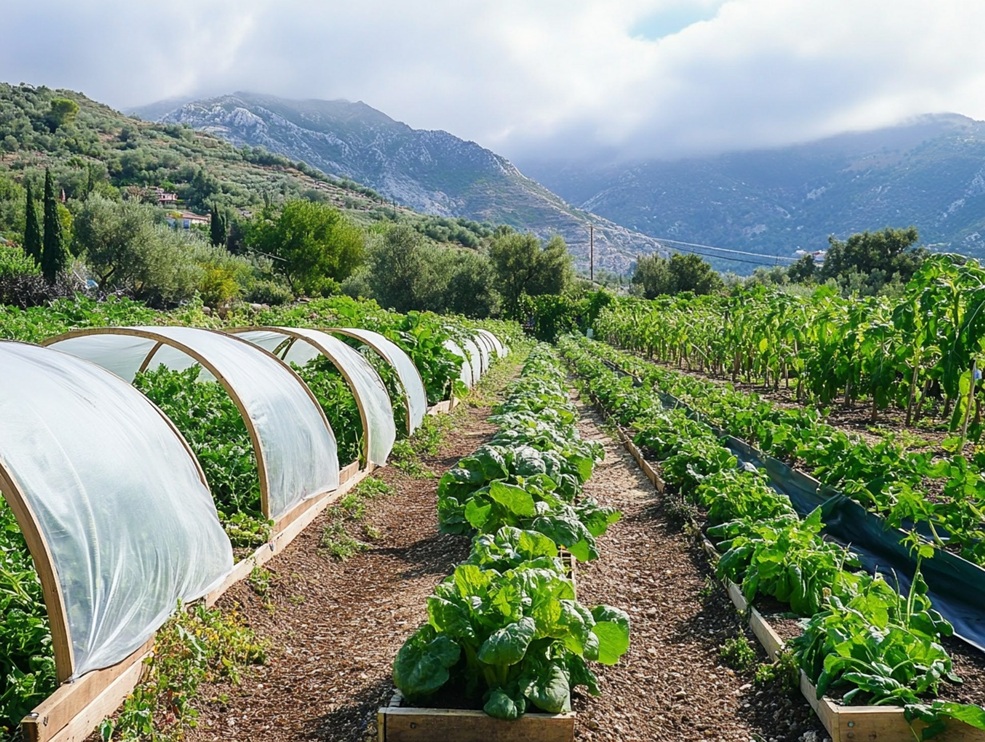Building Resilient Gardens for Any Condition
With the increasing frequency of extreme weather events, gardeners must adapt to ensure the health and productivity of their vegetable plots. Preparing your garden for extreme weather involves more than just hoping for the best—it requires proactive planning and practical strategies. By creating a resilient garden, you can safeguard your plants and maximize your harvest, no matter what Mother Nature throws your way.
Understanding the Impact of Extreme Weather on Gardens
Extreme weather can range from scorching heatwaves and prolonged droughts to torrential rains and sudden frosts. Each of these conditions poses unique challenges for gardeners. Knowing the risks and how to mitigate them can make a significant difference in the survival and success of your vegetable garden.
Common Types of Extreme Weather and Their Effects
- Droughts and Heatwaves: Lead to water stress, wilting plants, and reduced yields.
- Heavy Rain and Flooding: Can cause root rot, soil erosion, and nutrient leaching.
- Cold Snaps and Frost: Damage tender plants and halt growth.
- Strong Winds: Can break stems, uproot plants, and dry out the soil.
Tip: Familiarize yourself with the types of extreme weather most likely to affect your region to tailor your garden’s resilience strategy accordingly.
Soil Preparation: The Foundation of a Resilient Garden
Healthy soil is the cornerstone of any resilient garden. When preparing your garden for extreme weather, ensuring the soil is optimized for water retention and drainage is essential.
Improving Soil Structure
Amend your soil with organic matter such as compost or well-rotted manure. This helps improve soil structure, allowing it to retain moisture during droughts and drain efficiently during heavy rains.
- Compost: Adds vital nutrients and improves both sandy and clay soils.
- Mulching: Apply a 2-3 inch layer of mulch around your plants to help retain moisture, moderate soil temperature, and reduce erosion.
For more on enriching soil, refer to our post on “The Science of Soil: Understanding and Improving Soil Composition for Better Yields”.
Using Raised Beds
Raised beds are a smart choice for gardening in extreme weather. They provide better drainage during heavy rains and allow for more control over soil composition.
-
Benefits:
- Prevents waterlogging by elevating the soil above the surrounding ground.
- Heats up faster in the spring, extending the growing season.
Choosing Weather-Resistant Plants
One of the keys to preparing your garden for extreme weather is selecting plants that can withstand challenging conditions.
Drought-Tolerant Vegetables
When faced with heatwaves and droughts, choosing drought-resistant crops can make a significant difference:
- Tomatoes: Once established, they can tolerate dry spells.
- Peppers: Thrive in warmer temperatures with minimal water.
- Zucchini and Squash: Deep-rooted and resilient to water shortages.
Cold-Resistant Vegetables
If sudden frosts are a concern, opt for hardy vegetables that can tolerate cooler temperatures:
- Kale: A cold-hardy green that continues to thrive after light frosts.
- Carrots: Can be left in the ground and harvested even after a frost.
- Brussels Sprouts: Often taste sweeter after exposure to frost.
Flood-Resistant Crops
In regions prone to heavy rain and flooding, consider vegetables that can tolerate wetter conditions:
- Swiss Chard: Resilient and can survive temporary waterlogging.
- Celery: Prefers consistent moisture and can withstand damp conditions.
- Rice: A unique option for areas that stay waterlogged for extended periods.
Water Management Techniques for Extreme Conditions
Water management is critical when preparing your garden for extreme weather. Implement strategies that help conserve water during droughts and protect against excess water during storms.
Efficient Irrigation Methods
Invest in efficient irrigation systems like drip irrigation or soaker hoses to deliver water directly to the plant roots, minimizing water waste and promoting healthy growth.
-
Drip Irrigation Benefits:
- Reduces evaporation.
- Helps maintain consistent soil moisture.
- Rainwater Harvesting: Collect and store rainwater using barrels to provide an alternative water source during dry spells.
Creating Swales and Trenches
To manage water during heavy rainfall, design your garden with swales or trenches that guide excess water away from plant roots.
- Swales: Shallow channels that capture and redistribute water gradually.
- Trenches: Can be dug around garden beds to divert water to a desired location.
Protecting Your Garden from Wind and Frost
Strong winds and sudden frosts can wreak havoc on gardens if left unprotected. Here’s how to safeguard your plants from these extreme weather events.
Windbreaks and Barriers
Strategically placed windbreaks can reduce wind speed and protect delicate plants.
- Natural Windbreaks: Shrubs, trees, or tall plants like sunflowers can shield your garden from strong gusts.
- Fences and Screens: Install wooden or lattice fences to provide a sturdy barrier.
Frost Protection Techniques
Frost can damage or kill plants overnight, so proactive measures are essential:
- Row Covers: Use fabric covers or frost blankets to insulate plants during unexpected cold snaps.
- Cloches and Mini Greenhouses: Provide protection for individual plants or small groups.
- Watering Before Frost: Moist soil retains heat better than dry soil, so watering before an expected frost can help protect plant roots.
Designing a Resilient Garden Layout
A well-thought-out garden layout can make your plot more resilient to extreme weather. Here are key elements to consider when designing your garden for resilience:
Companion Planting for Mutual Protection
Companion planting involves growing plants together that can support each other’s health and resilience.
-
Example Combinations:
- Corn, Beans, and Squash: The traditional “Three Sisters” planting method offers mutual shade, support, and weed control.
- Tomatoes and Basil: Basil can help repel pests and provide partial shade to tomato roots.
Explore more about companion planting strategies in our guide “Unveiling the Power of Companion Planting”.
Strategic Plant Placement
Place more vulnerable plants in the most sheltered areas of your garden, such as against a south-facing wall that provides warmth and wind protection.
- Tall Plants as Shields: Use taller plants like sunflowers or trellised beans to shield shorter, more delicate plants from harsh winds.
- Elevated Areas for Flood Protection: Plant in raised beds or higher sections to reduce the risk of root rot in waterlogged conditions.
Maintaining Garden Health Through Weather Challenges
Routine garden maintenance can bolster resilience and prepare your garden for unexpected weather.
Regular Mulching
Applying mulch can protect plant roots by insulating the soil against temperature extremes and retaining moisture.
-
Types of Mulch:
- Organic options like wood chips or straw for water retention.
- Inorganic mulch like gravel for added durability in high-wind areas.
Pruning for Strength
Pruning plants helps them develop stronger stems and encourages airflow, reducing the risk of wind damage and fungal infections.
Seasonal Garden Reviews
Regularly assess your garden’s layout, soil health, and plant choices to adapt to changing weather patterns. Make modifications as needed to stay ahead of the next season’s challenges.
Additional Resources for Garden Resilience
Building a garden that withstands extreme weather is a journey of learning and adaptation. For further reading, consider these resources:
- Water Conservation Techniques: Learn more in our post on “Eco-Friendly Watering Techniques” for sustainable ways to manage water use.
- Soil Improvement Strategies: Dive into “Reviving Your Garden Soil: Natural Methods for Rejuvenating Tired Earth” for more tips on keeping soil healthy and productive.


Leave a Reply